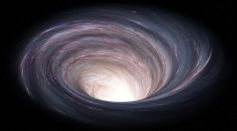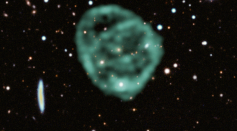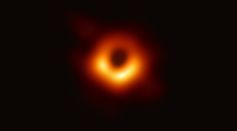Tags: Black holes

Colliding Black Holes Created Space-Time Ripples Like No Other, Similar to Waves on the Surface of Water

Wormholes May Have Been Hiding in Plain Sight: Scientists Determine Their Difference From Black Holes

Two Supermassive Black Holes Predicted to Collide Within Three Years: Here's What to Expect

Astronomers Captured a New Detailed Image of Odd Radio Circles (ORCs) Using the World's Most Capable Telescopes

Two Supermassive Black Holes Locked Together by Gravity near Galaxy,’ Heading for ‘Titanic Collision’

Origins of Heavy Metals: Researchers Use Computer Simulations to Determine Where Gold Comes From

Is NASA’s Top Priority the Discovery of Other Kinds of Life and Possible Habitat Apart from Earth?
Wandering Rogue Black Holes in Milky Way Galaxy Are More Common Than Previously Thought
Earth Destruction: Is This Really Possible? Black Holes, Volcanoes, Robotics May Negatively Impact the Planet in the Future
Black Holes, Neutron Stars Merge: Astrophysicists' 'First-Ever' Confirmed Merger Detection
Gigantic Galactic Wind Discovered: Researchers Say It is from 13.1 Billion Years Ago
Supermassive Black Holes Might Unravel The Mystifying Fifth Force Of The Universe
NASA's Chandra X-Ray Observatory Found The Evidence Of Earliest Supermassive Black Holes
Astronomers From Austin & Harvard Test The Basic Principle Of Black Hole
Black Hole Quietly Born From Collapsing Massive Star That Skipped Its Supernova Stage
Milky Way’s ‘Missing Link’ Black Hole Discovered In The Sagittarius Constellation
NASA Captures Black Hole Flares, Ejection of Corona
Hubble Spots Collisions and Cosmic Disarray At the Center of Black Hole
Rare Quasar Quartet is the First of Its Kind
Large Hadron Collider Could Prove the Existence of Star Trek's Parallel Universe
Most Popular

Hellfire Missile Video Reveals MQ-9 Reapers Being Used for Aerial Combat

Is the iPhone Air Eco-Friendly? Environmental Trade-Offs Explained

FDA Approves New Hypertension Notification Feature With Apple's WatchOS 26

Tesla Cybertruck Crashes Anti-ICE Protests in LA, Becomes Unlikely Symbol of Trump Controversy





